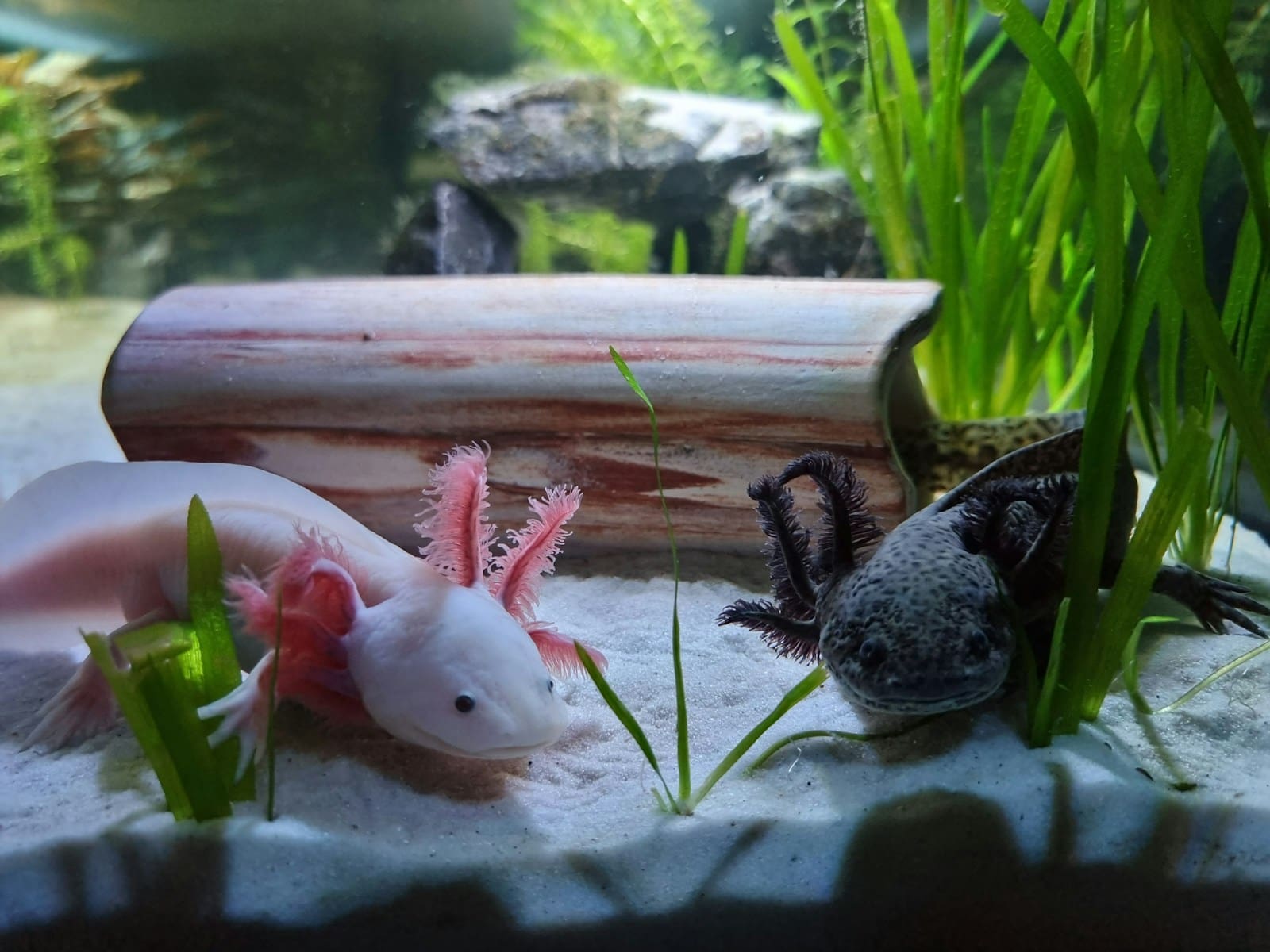Axolotls are fascinating salamanders that have a number of unique traits. They’ve got big, happy smiles and have become a beloved animal for good reason! Here are ten quick fun facts about the axolotl.
Don’t Show Signs of Age

Unlike many amphibians, axolotls never undergo metamorphosis. They keep the same body shape throughout their lives. This means they also never show physical signs of aging and can live to be up to 20 years old with proper care and attention!
Native to Mexico
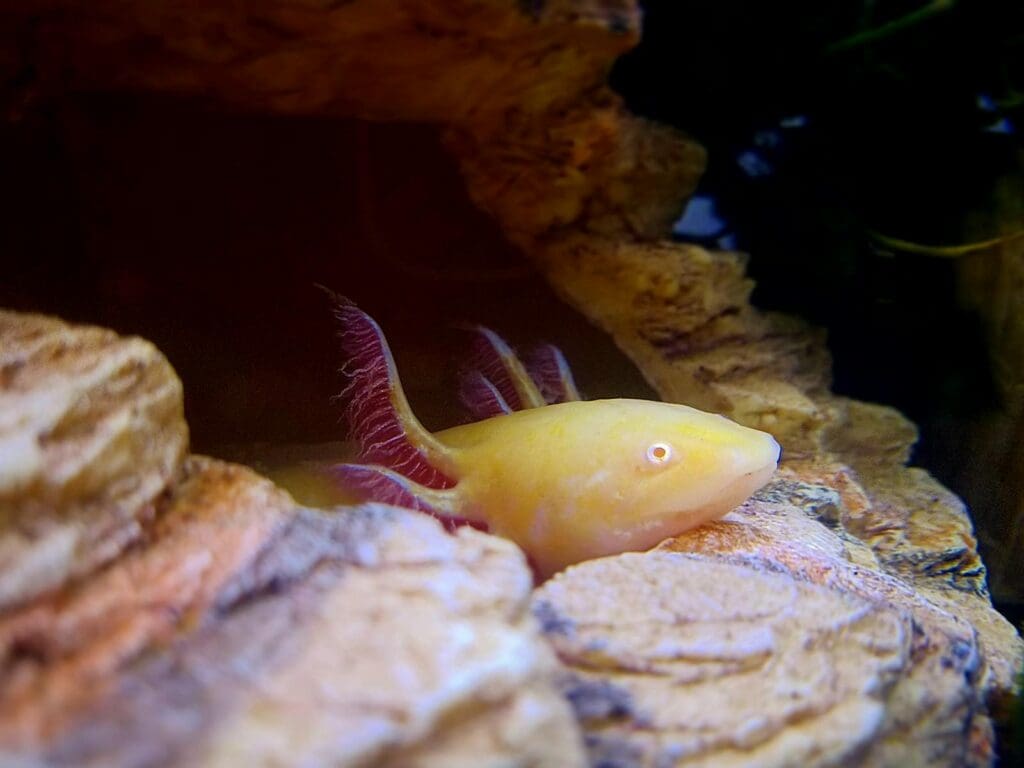
Axolotls naturally occur in only one place on Earth: a lake in Mexico City. Since one of only two natural habitats for them was drained, axolotls now only appear in Lake Xochimilco, a high-altitude lake in southern Mexico City.
Colorful

While you might be used to seeing pink or white axolotls, these colors almost exclusively show up in captivity due to breeding. In the wild, they can be gold, brown, tan, or olive colored. Breeders just selected the pink color for captive axolotls due to it being so eye-catching.
Carnivorous
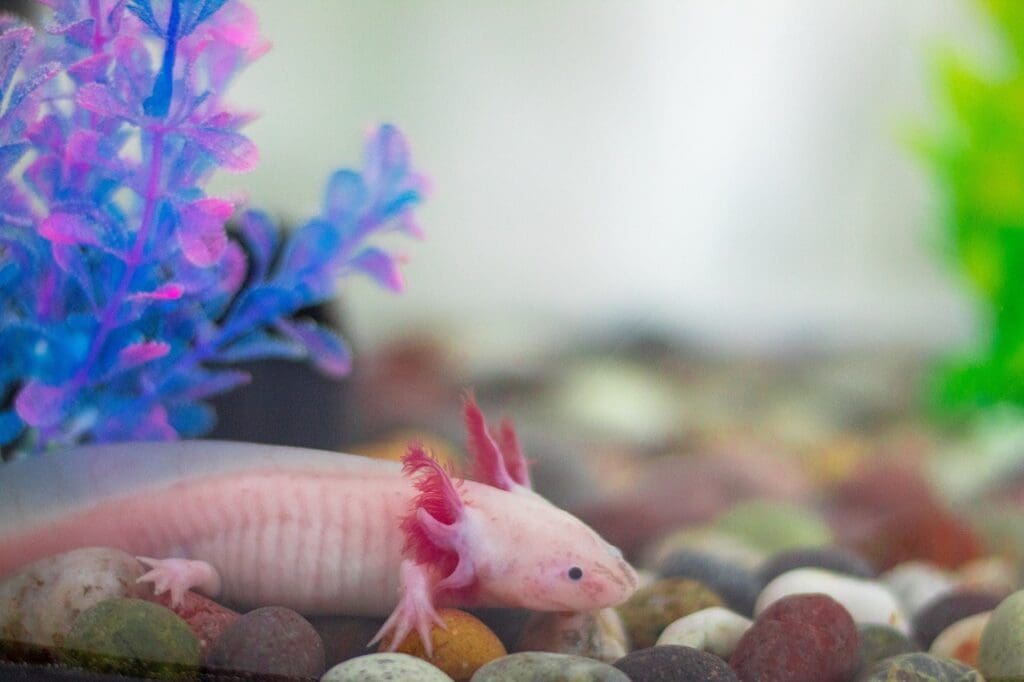
Despite their cheerful appearance, axolotls are hunters at heart. They’ll eat living or dead animals and prefer crustaceans, worms, insects, and small fish. However, they’re also hunted by carp and tilapia. They don’t grow teeth and have to filter their food with a vacuum-like eating habit.
Mating Dance
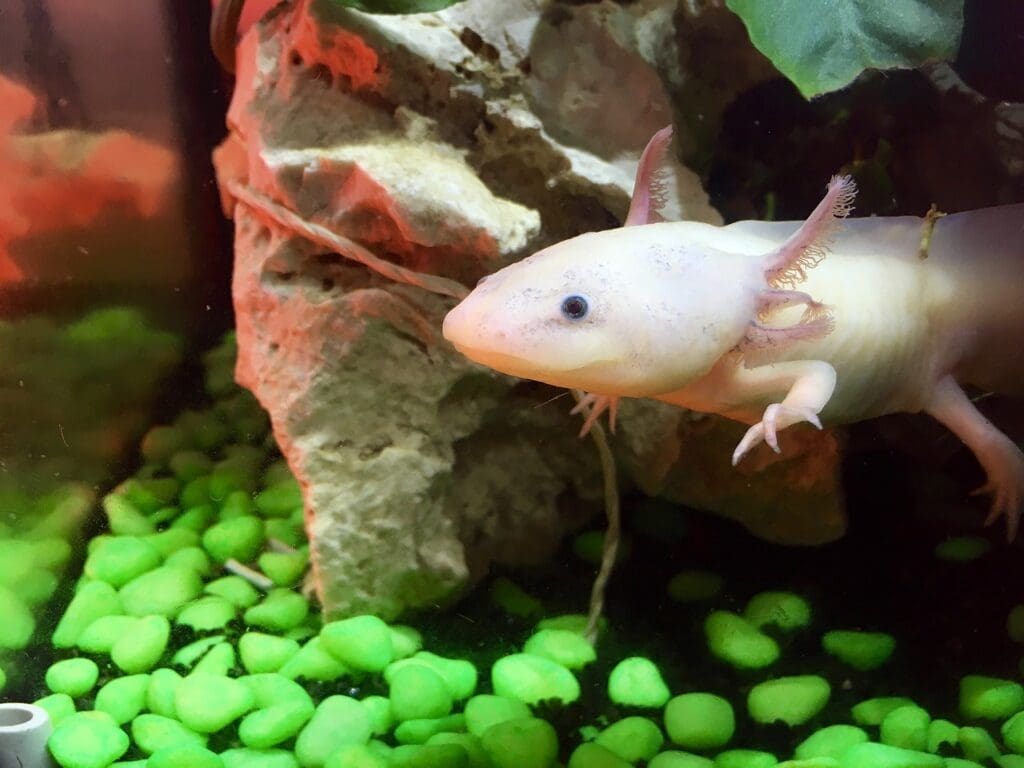
In case these little salamanders needed to somehow be even cuter, they also like dancing. When male axolotls are a year old, they spend mating season in January doing a hula-like dance that involves shaking their tails to attract a mate. It’s adorable!
Brought to Europe in 1864
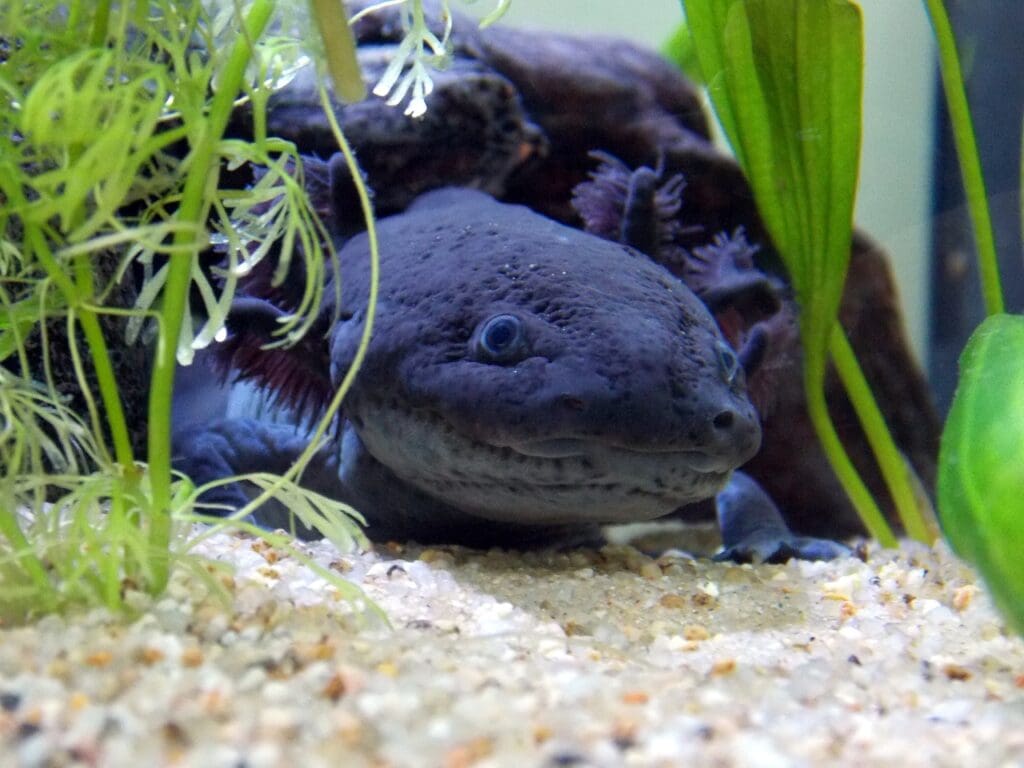
Axolotls were first introduced to Europeans in 1864 when they were brought to Paris for study. Scientists were fascinated by their lack of metamorphosis and their regenerative abilities. They breed easily and take well to life in an aquarium, so they quickly become popular.
Religious Significance
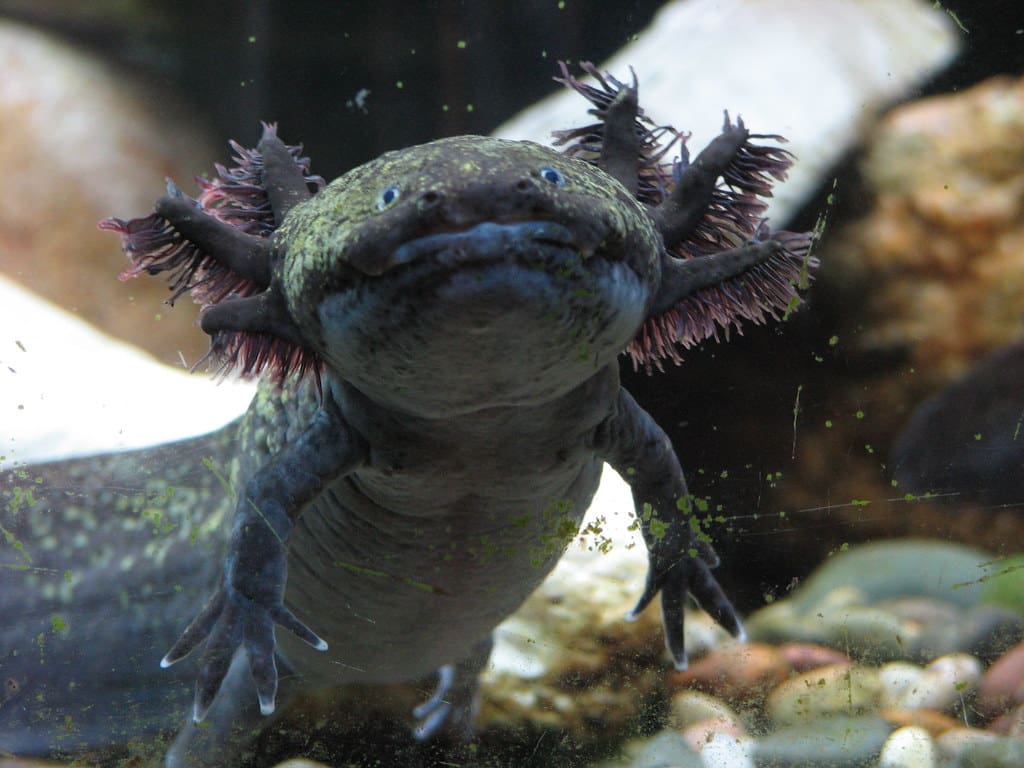
In Aztec beliefs, the axolotl takes on religious significance as the symbol of its namesake, the fire and lightning god Xolotl. In one tale of the sinister deity, he schemed to escape sacrifice at the hands of the wind god Ehecatl and transformed into an amphibian—the smiling axolotl we know today.
Regeneration

Axolotls have some of the most advanced regenerative abilities of any animal on the planet. They can regrow lost limbs, like all salamanders, but their abilities go beyond just this. They have also been observed regenerating organs, jaws, spines, and entire segments of their bodies. Scientists have been studying this ability for decades to better understand how they do this.
Read More: How Pets Bring Us Closer to Nature
Banned as Pets

In many states, axolotls are banned as pets. This might sound a bit unfair, but the reasoning varies from state to state. In most, the concern centers on a fear of the animals escaping into the wild and becoming an invasive species for local wildlife. Check your state’s laws before you adopt a smiling friend!
Read More: 10 Things People Get Wrong About Pet Fish
Endangered Species
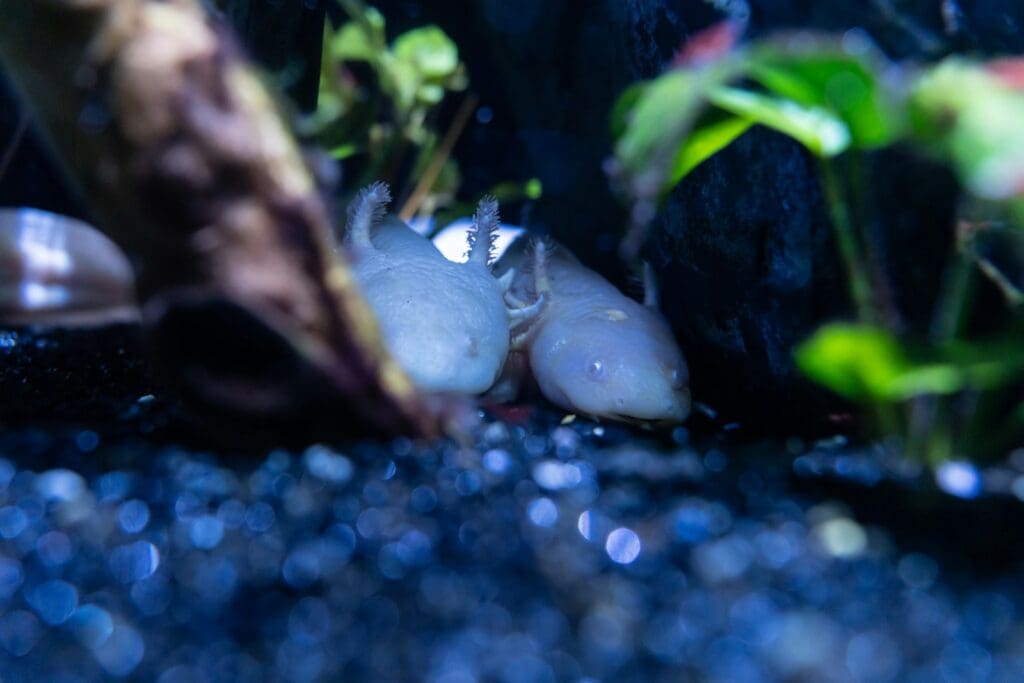
Unfortunately, since axolotls only naturally inhabit one lake in the world now, they are endangered. Some estimates hold that there are as few as 700 wild axolotls left in Lake Xochimilco. The government of Mexico has plans to help build back up natural habitats for the animals. Here’s hoping their plans come to fruition.
Read More: 10 Animals That Could Be Extinct by 2050

